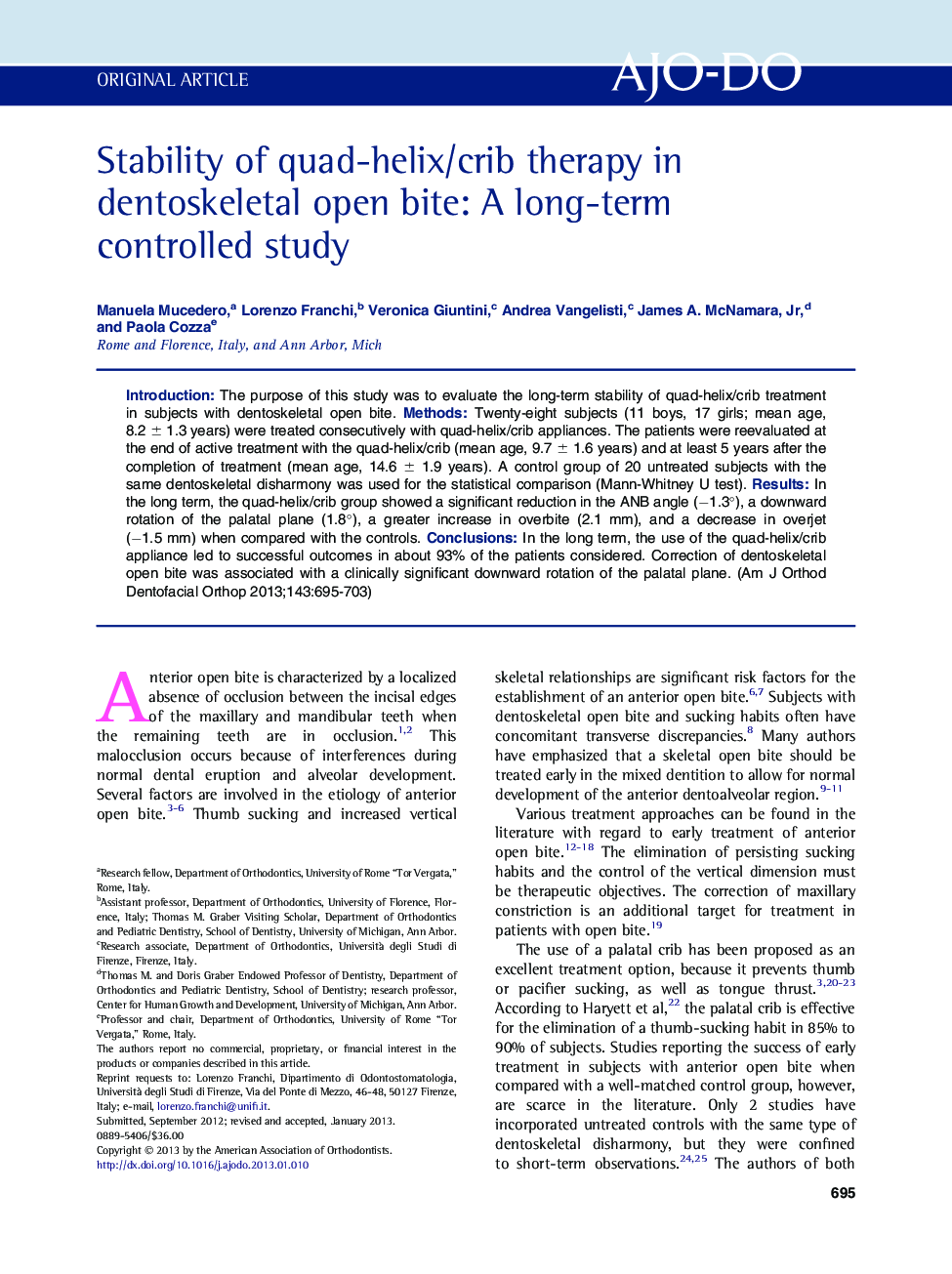| Article ID | Journal | Published Year | Pages | File Type |
|---|---|---|---|---|
| 3116619 | American Journal of Orthodontics and Dentofacial Orthopedics | 2013 | 9 Pages |
IntroductionThe purpose of this study was to evaluate the long-term stability of quad-helix/crib treatment in subjects with dentoskeletal open bite.MethodsTwenty-eight subjects (11 boys, 17 girls; mean age, 8.2 ± 1.3 years) were treated consecutively with quad-helix/crib appliances. The patients were reevaluated at the end of active treatment with the quad-helix/crib (mean age, 9.7 ± 1.6 years) and at least 5 years after the completion of treatment (mean age, 14.6 ± 1.9 years). A control group of 20 untreated subjects with the same dentoskeletal disharmony was used for the statistical comparison (Mann-Whitney U test).ResultsIn the long term, the quad-helix/crib group showed a significant reduction in the ANB angle (−1.3°), a downward rotation of the palatal plane (1.8°), a greater increase in overbite (2.1 mm), and a decrease in overjet (−1.5 mm) when compared with the controls.ConclusionsIn the long term, the use of the quad-helix/crib appliance led to successful outcomes in about 93% of the patients considered. Correction of dentoskeletal open bite was associated with a clinically significant downward rotation of the palatal plane.
